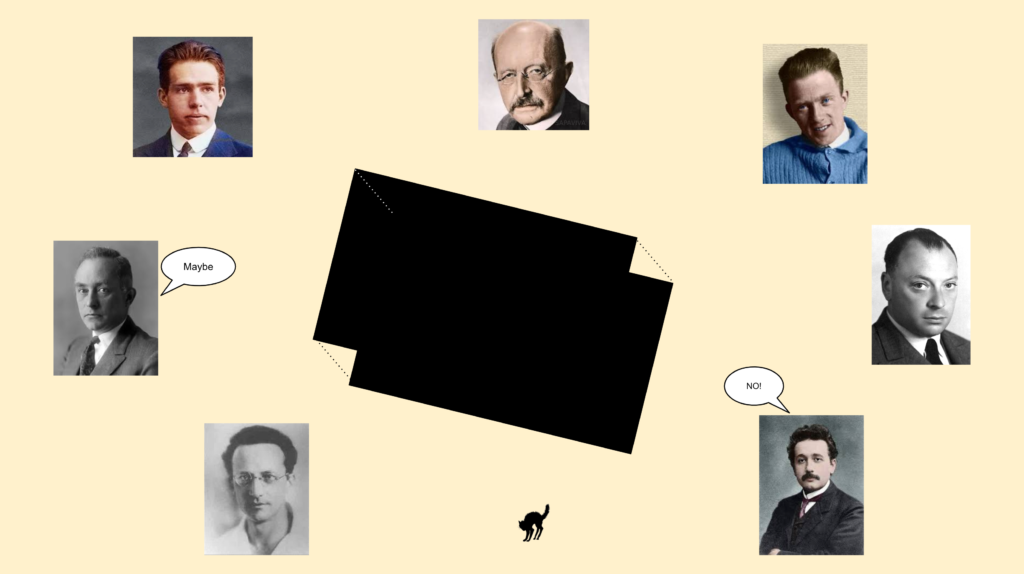
Scientific journal interview.
Q: Can you explain the black box?
A: Sure, we know its blackness spectrum. Some are more black, others are less black, and others it is very difficult to assess because the instruments we use to measure it affect their blackness.
They have edges. Some edges are very edgy. Others are hardly edgy at all, but all have some edginess, somewhere.
A fundamental principle of quantum black box mechanics, though, is that when we know the exact level of edginess, we cannot know the exact level of blackness, and vice versa.
The same happens with the corners and their pointiness. If we know pointiness, we cannot know cornerness.
Nevertheless, we know they have either 4 corners, 8 corners, or, weirdly, 17 corners. And, the anti-black box has either -4 corners, -8 corners, or -17 corners. That was an incredible breakthrough, we call it Quantum Corner Dynamics (or QUACORDY so we don’t confuse it with QCD).
Some physicists are exploring the theoretical 1/2 corner black boxes (4 1/2, 8 1/2, and 17 1/2 and their counterparts). But, many are skeptical of that idea.
We can, however, know for sure, how many corners and how much blackness a black box has at the same time. Those are not conjugates (apparently), so, fortunately, we can measure both properties with unequivocal certainty.
Interestingly, though, when we put two black boxes together, and we know for sure how many corners and how much blackness each has, the total corners and total blackness of the new black box they form has nothing to do with the original ones.
We put a name to that, it’s called super dark black boxiness theory (SDBBT).
In fact, when we separate them again, even if we put them miles away, and we measure the blackness of one, then the other has all the corners of both, simultaneously.
This happens 50% of the time. Violating the principle that you must never contradict Einstein.
In the other 50% of the times, it never actually happens. Fortunately.
However, when we put them back together, we can measure the new number of corners and blackness of the new black box for sure. That was another significant breakthrough of QUACORDY.
Q: Wow, that’s all very interesting. But, what is a black box?
A: We have no idea.